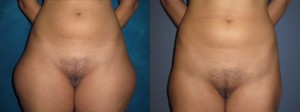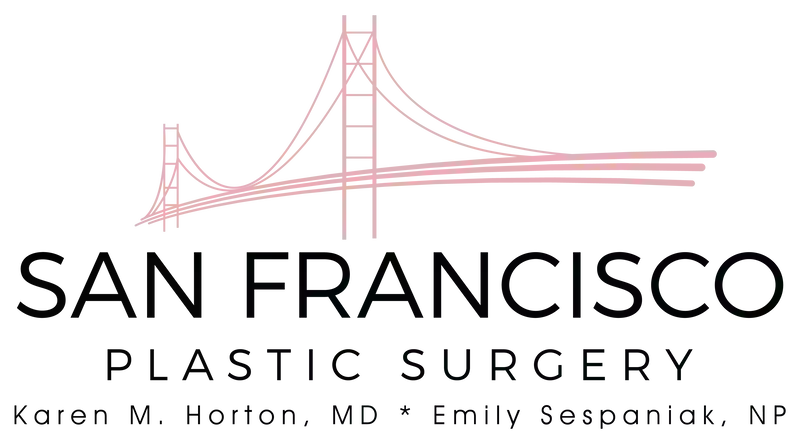Overview of Liposuction Techniques
 Liposuction is truly a wonderful technique! There is nothing that can match what liposuction can achieve: the permanent removal of fat cells in specific areas of the body where it is stubbornly stored, such as the abdomen, hips, inner or outer thighs, neck and “flanks” (also known as the “muffin top” or “spare tire” region). As mentioned in my previous blog post – “Dr. Horton Spotlights Liposuction in Q&A Interview” – there are multiple liposuction techniques available at my practice, so in order to provide more information for patients interested in this body contouring procedure, I’ve detailed my two most common techniques below.
Liposuction is truly a wonderful technique! There is nothing that can match what liposuction can achieve: the permanent removal of fat cells in specific areas of the body where it is stubbornly stored, such as the abdomen, hips, inner or outer thighs, neck and “flanks” (also known as the “muffin top” or “spare tire” region). As mentioned in my previous blog post – “Dr. Horton Spotlights Liposuction in Q&A Interview” – there are multiple liposuction techniques available at my practice, so in order to provide more information for patients interested in this body contouring procedure, I’ve detailed my two most common techniques below.
Standard Liposuction
Standard liposuction is the technique I most commonly use for patients, as it is straightforward and carries the least risks in general. During standard liposuction (known as SAL), tiny incisions one to two millimeters in diameter (the size of a freckle) are made in body creases so that they are generally hidden from view.
The first step involves infiltration of the fat with “tumescent solution,” which contains normal saline (sterile saltwater) to help puff up the area of fat cells, epinephrine (adrenaline) that causes “vasoconstriction” to minimize bruising, and a local anesthetic (lidocaine) that facilitates postoperative comfort. After a short waiting period to allow the tumescent solution to take effect, a blunt-ended wand known as a “cannula” is introduced through the incisions to remove the fat using a vacuum machine. The smallest possible diameter cannulas are used to ensure a smooth removal of the fat and feathering-out of fat removal in the surrounding regions, avoiding contour irregularities and promoting a smooth contour. Incisions are closed with dissolving stitches and a compression garment is placed before the patient wakes up. This garment will be worn for up to six weeks postoperatively.
Ultrasonic-Assisted Liposuction
 Ultrasonic-assisted liposuction, or UAL, is best used for specific areas of the body, such as excess male breast tissue (“gynecomastia“), the back, and the flanks. Additionally, this technique is beneficial for repeat liposuction cases where the fat may be more firm and fibrous following a prior surgical procedure. Furthermore, it is best used for HIV medication-associated lipodystrophy, where the body stores additional firm and fibrous fat in specific regions of the body such as the neck and upper back.
Ultrasonic-assisted liposuction, or UAL, is best used for specific areas of the body, such as excess male breast tissue (“gynecomastia“), the back, and the flanks. Additionally, this technique is beneficial for repeat liposuction cases where the fat may be more firm and fibrous following a prior surgical procedure. Furthermore, it is best used for HIV medication-associated lipodystrophy, where the body stores additional firm and fibrous fat in specific regions of the body such as the neck and upper back.
UAL is slightly more complicated in that ultrasound energy is first used to help “melt” the fat cells before it is suctioned out. There is a small risk of thermal injury to the skin (mild burns) at the sites where the wand is introduced, and the procedure requires an additional step and slightly more time to perform.
Final Thoughts
For most patients, I typically use traditional suction-assisted lipectomy (SAL), reserving UAL for select cases or regions of fat where it is indicated for the best results. I carefully screen patients to determine they are candidates for liposuction first, and then decide which technique is most appropriate for their bodies before we proceed with any method.
Following any liposuction procedure, some mild bruising is expected for two to three weeks, and at least a few days should be taken off work during the recovery period. I recommend avoiding exercise and any activities that could elevate heart rate and blood pressure, at least until the bruising is resolved. Results are generally evident at three months, and the fat removal is permanent! Continuation of a healthy lifestyle is recommended after any liposuction procedure so that optimal results can be maintained in the long term!
For more information about liposuction, or to schedule a consultation, feel free to contact us today!
